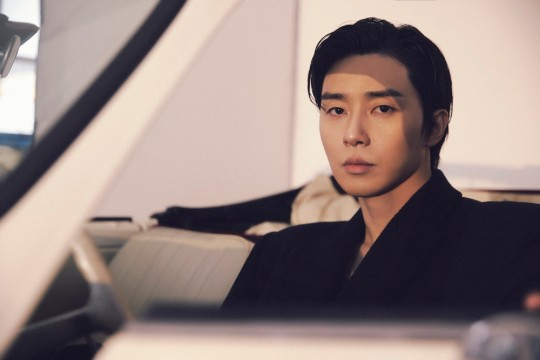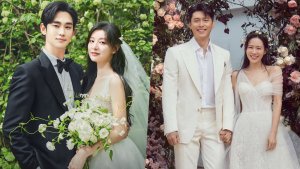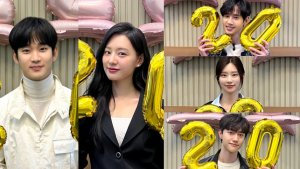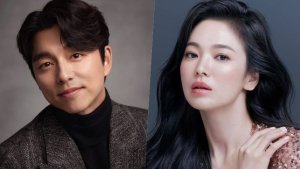 Song Seung Heon and Team are Debonair Swindlers in "Player Season 2"
Song Seung Heon and Team are Debonair Swindlers in "Player Season 2"
On the afternoon of January 11, an interview with actor Park Seo Joon, who stars as the lead in the Netflix original series Gyeongseong Creature, was held at a cafe in Samcheong-dong, Seoul.
Park Seo Joon played Jang Tae Sang, a wealthy businessman and the boss of Geumokdang, the top pawn shop in Gyeongseong.
Talking about the criticism the K-drama received (especially after the release of Part 1 followed by positive reviews after Part 2's release), the actor shared, "There are times when I humbly accept it, but I am a human, and I do get hurt. In such cases, I try to stay away [from negativity]. I think I can feel what I'm disappointed about without having to talk about it. Rather than rejecting reviews or worrying about such things, I try to pay more attention to positive comments so as not to break down. The decision to release it in Part 1 and Part 2 was not entirely mine, but I am very thankful for the positive response. The director, Han So Hee, and I had talks. There seem to be both positive and disappointing aspects for dividing it into two parts," he said, adding, "but there's also the thought that releasing it in parts may have instilled anticipation for Part 2."
The director and writer of Gyeongseong Creature admitted that, as the K-drama dealt with topics like the Japanese colonial era and Unit 731, no actors were willing to participate.
Park Seo Joon commented, "The expression 'I appeared as a lead actor' seems grand. I have been working for over 10 years, and I wanted to experience [acting in] a work that depicts that era. But a work [a drama/movie] isn't something you do just because you want to; everything has to align. My schedule has to align, and the schedule of the co-actors has to align. I need the right work at the right time. Everything has to fall into place, and fortunately, when I wanted to do a work depicting this era, Gyeongseong Creature was there. The combination of a historical drama and creature was also refreshing [concept]."

Responding to the question, "Even among Korean actors, you are known to be popular in Japan. Did you feel any pressure?" Park Seo Joon said, "I went to Japan on January 2. I had an event scheduled in advance. I have Japanese friends in Japan as well. Since Gyeongseong Creature was releasing at the same time, I asked them, 'What do you think?' They all expressed that they didn't understand why some people were against it. I don't know [if they said that] because they are acquaintances of mine (laughs). Everyone spoke positively and said it made them think a lot. I didn't worry too much about going to Japan for performances or about things like popularity."
When asked if the lengthy shooting and the uncertainty of the release put much pressure on him, he said, "Honestly, I didn't think it would be that long (laughs). I believe you have to do your best until the end. It seemed like there would be a need for preparation before entering Season 2. It wasn't shot continuously for two years; there were breaks of two or three months in between. During those gaps, it's hard not to feel uneasy. I was always nervous. What was really fortunate was that during the two years of shooting Season 2, none of the field staff changed, and I felt like everyone had the same intention." He added, "Since we spent two years together, it felt even more meaningful. I felt disappointment when it ended."

Since Park Seo Joon was trending in Japan, his response to the question of whether he decided to be cast because of that factor was, "The criterion for my choice of work is not popularity. It is a history we all know, a painful and heavy history, not a shameful history. For those who don't know (history), it could be an opportunity to learn, and for those who momentarily forget, it could be a reminder, and there are many other reasons. Of course, it is a history that I know as a citizen of the Republic of Korea, and its weight cannot be expressed in words, but the point that I focused on when choosing the work was to express the people living in this era. Since I have never lived in that era, I wonder what kind of feelings people who lived through that era had."











